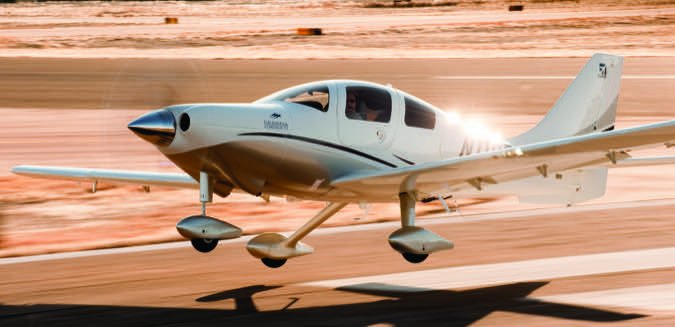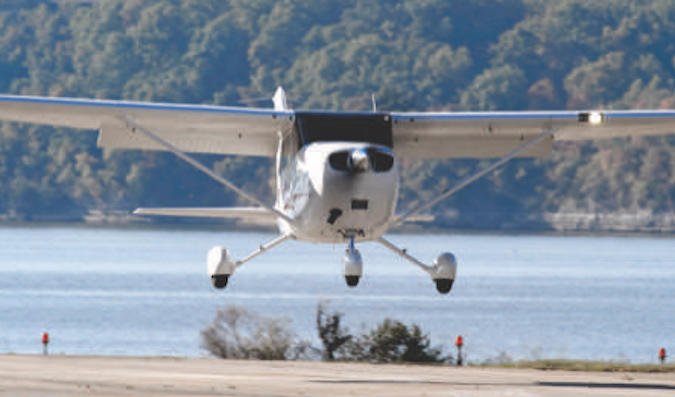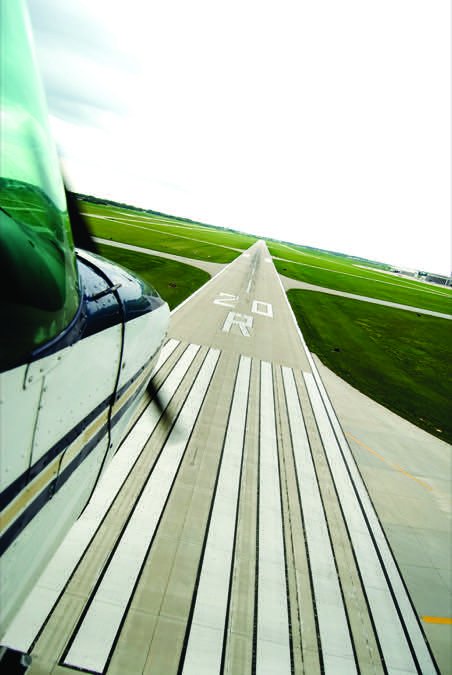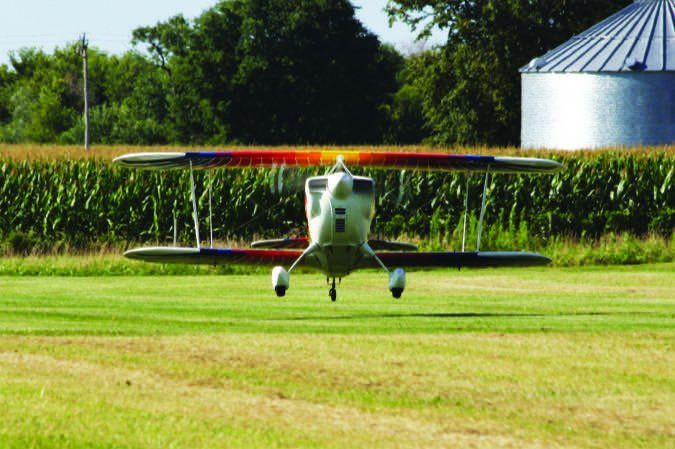One of the rungs on the ladder student pilots must climb is the touch-and-go. It naturally follows learning about stalls, flying a traffic pattern, and takeoffs and landings individually, and has become a time-honored way for pilots of all skill levels to practice using a runway. Interestingly, the FAA’s flight training literature offers little guidance on touch-and-goes beyond a definition in the Pilot/Controller Glossary (PCG) and that section of the Aeronautical Information Manual (AIM). Both define a touch-and-go as an “operation by an aircraft that lands and departs on a runway without stopping or exiting the runway.”
Sounds simple, doesn’t it? This definition and the scarcity of formal guidance from the FAA on performing touch-and-goes also implies that the maneuver isn’t something to worry about. After all, it’s just the hard parts of a landing, followed immediately by what is supposed to be easy: a takeoff. What could go wrong?
Elements
The touch-and-go (or touch-and-go landing, if you prefer) has three basic and obvious phases: the landing approach and touchdown, the time spent rolling on the runway and the liftoff and initial climb. A fourth phase involves flying around the traffic pattern, which is not really what we’re about in this article.
The approach and landing phase should be conducted in accordance with whatever specific procedure is being practiced: normal, engine-out, short/soft-field, high density altitude. Simply because you’re not planning to slow down and exit the runway doesn’t mean you should do anything different on the approach and landing. After all, the reason you’re doing touch-and-goes is to practice, and you can’t engage in valuable practice if you don’t simulate realistic conditions and procedures.
For the most part, the same is true for the takeoff and initial climb. One difference here is you’ll likely be farther down the runway at liftoff than if you started from a standstill at the threshold. This takes on importance when considering possible obstacles at the runway’s departure end and choosing the points at which to turn in the pattern—the point at which you turn crosswind won’t be the same one you used after the first takeoff of the day. Deciding when to turn crosswind after a touch-and-go probably should be based on altitude—500 feet agl, for example. The subsequent turn onto the downwind leg should be based on lateral distance from the runway instead of altitude or landmarks.
The fun happens during that second phase I just glossed over: rolling on the runway. There’s more going on here than the simple touchdown and deceleration after a landing or the acceleration and liftoff of a takeoff.
Do’s And Don’ts For Your Touch-And-Go Landings
There really are only two rules associated with touch-and-goes: One, you’ve got to touch the runway for it to count; two, don’t break anything in the process. Unfortunately, the act of landing and then immediately taking off sometimes proves to be more than a pilot can handle. Don’t let that be you. To help, consider these do’s and don’ts.

Do:
– Ensure runway length and conditions (wind, traffic, etc.) are adequate to the task. If not, go somewhere else.
– Unless you’re simulating high density altitude conditions, always use full takeoff power.
– Perform all pre-landing and pre-takeoff checklists. Yes, you’ll have to do the pre-takeoff checklist on the roll.
– Use the radio to ensure everyone knows what you’re doing, especially the tower controllers. Duh.
– Go around if something doesn’t look right. This is supposed to be practice, and going around is part of the bargain.
– As long as the fan keeps turning, feel free to leave the gear down. Watch engine cylinder head temperatures.

Don’t:
– Don’t commit to the takeoff without assessing whether there’s sufficient runway remaining, including enough to clear any obstacles.
– Don’t reposition the fuel selector valve on the ground. If you need to switch tanks, do it on the downwind.
– Don’t forget to reset the pitch trim or reposition wing flaps for the takeoff.
– Don’t omit the pre-landing checklist, especially if you’re flying a complex airplane.
– Don’t touch the gear handle on the ground—confirm it’s flaps you’re retracting.
On The Runway
Once you’ve touched down, your task is to take off again. But before you can do that, the airplane may need reconfiguring. Many airplanes we fly will require at least resetting pitch trim and wing flaps, as well as turning off carburetor heat. After which, there has to be sufficient runway remaining to perform the “go” part of the maneuver. While you’re engaged in these tasks, you also have to maintain directional control, monitor and manage power settings and ensure the runway ahead remains clear.
Perhaps the greatest challenge is directional control. At idle power while rolling down the runway, the airplane naturally will begin to decelerate. Even at slightly less than touchdown speed, you’re still using the flight controls—roll, yaw and pitch—to steer the airplane. As you decelerate, these controls become less effective and the airplane will be more susceptible to crosswinds and gusts. The reverse is true once takeoff power is applied. You’re accelerating, and control responses will improve as more air flows over them.
One way to minimize loss of control effectiveness on the rollout is to add back some power, enough to maintain your speed while you reconfigure the airplane. Do so gently, since the additional P-factor and torque also may affect how the airplane responds to your control inputs. Regardless, the biggest thing you need to get right during your time on the runway is maintaining directional control while reconfiguring the airplane for takeoff.
Part of the challenge is the airplane’s pitch attitude. During the rollout after a normal touchdown for a full-stop landing, you’ll likely position the controls differently than on a touch-and-go. Once the pitch control loses authority and the nosewheel touches the runway in a tricycle-gear airplane, for example, your normal procedure for the rollout may be to pull the pitch control all the way back to the nose-up position, maximizing both weight on the main wheels and aerodynamic drag for deceleration. On a touch-and-go, you’ll need to relax that control input by the time takeoff power is applied or the airplane will lift off early.
Similar considerations apply to the pitch control when flying a taildragger, a seaplane or when operating on a soft field. Of course, a touch-and-go in a taildragger doesn’t count toward meeting the minimum experience requirement to carry passengers, but that may not be a concern. In a taildragger, you may want the pitch control fully nose-up until liftoff. With a seaplane, you’ll likely want the pitch control fully nose-up, too, if the airplane has fallen off the step. Same with soft fields, or when practicing for them.
After all that and before adding takeoff power for the “go,” a final consideration is whether there’s enough remaining runway. What about clearing the trees at the departure end? While your initial touch-and-go planning must include selecting an adequate runway, you also should establish an abort point, a taxiway or other landmark beyond which you will pull off the power and stop on the runway if you’re not off the ground. Turn that landing into a full-stop and then taxi back for another takeoff.
It all sounds easy, doesn’t it? And it usually is, unless there are complications like a crosswind requiring even more attention to airplane control. In fact, it can be boring. So mix things up a bit.
Reasons Not To Do Touch-And-Goes

Touch-and-goes are a great way to maximize the time spent practicing takeoffs and landings. But they’re not always the best solution. Some reasons to do full-stop and taxi-back operations instead can include:
Unsuitable runway
In our view, a runway suitable for touch-and-goes must have some basic features. Length is one, and a minimum requirement can be found by combining the airplane’s published takeoff and landing distances for the conditions. The reasons why are obvious, but even that much runway may not be enough to learn how to manage crosswinds in a simple airplane. When flying a complex airplane, I want even more runway.
Complex Airplane
Dealing with landing gear, pitch trim, cowl flaps, propeller controls and wing flaps—among other controls—during a touch-and-go makes for a busy time on the runway. Perfecting those tasks can be part of the training or practice, but also is an opportunity for mistakes. While I’ve done touch-and-goes in high-performance singles and light twins, it’s only when the runway is at least twice the minimum recommended above and there was another pilot along for the ride, making sure the airplane always was properly configured.
High Density Altitude
There are sound reasons to practice high density altitude runway operations, but they can be simulated at low-altitude airports by using reduced power settings for takeoff and slightly higher approach speeds. Performing them in high-and-hot conditions can be done, but it requires lots of runway and strict use of a takeoff abort point.
Short/Soft Field Practice
If you’re looking to practice short- or soft-field operations, a touch-and-go will provide only half of what you’re looking for, mainly the approach and landing phase. Meanwhile, touch-and-goes on a turf runway with an appropriate airplane can be some of the most fun you can have, runway length permitting.
Variations
Of course, touch-and-goes only count toward daytime minimum experience requirements, so the stop-and-go was invented. It’s just as it sounds: Land, come to a full stop on the runway, then take off again. They can be preferable in complex airplanes, if you don’t mind some brake wear. But they consume lots of runway. In the sidebar at left, we suggest combining published takeoff and landing data for basic touch-and-goes. Double it for stop-and-goes.
Another variation is the low approach, which can be combined with an aileron/rudder maneuver to touch each main wheel independently, then add power and fly away. That maneuver often is used to demonstrate control and build confidence. A normal low approach is just that: fly down the runway at, say, 20 feet, then accelerate and climb out. It can be useful for scaring deer off a rural runway in the middle of the night.
Finally, there’s the option “landing,” in which the pilot flying isn’t told whether to land, touch-and-go, or go around until very short final. That can be a useful training tool and you might see it on a checkride. Basically, the challenge is to configure and fly the airplane so that it doesn’t really matter which option is exercised—a successful outcome is never in doubt.
You also may want to load the airplane to its gross weight, since typical training and practice flights are with light loads and it can be useful to experience the reduced performance in a training environment before encountering the real thing. As was discussed by a reader in last month’s Unicom department, putting a bunch of your friends aboard probably isn’t the best solution. Even if they’re all pilots, the possibility for distraction and forgetting something important—like retracting the wing flaps before trying to take off in an overloaded 172, is increased when you use self-loading freight to load the airplane.
In all of this, it’s critical to keep ATC and/or local traffic informed of what you’re doing. If the airport is busy with transient operations, it may not be the best time, especially if you’re trying to practice engine-out approaches or a series of stop-and-goes. A sleepy little outlying non-towered airport with a big runway may be your best bet. Always either conduct a self-briefing about runway suitability, abort points and, for example, whether to leave the gear down throughout, or ensure there’s a formal discussion among pilot and instructor/mentor/monitor about what to expect and what role, if any, the right-seater will play.
Jeb Burnside is this magazine’s editor-in-chief. He’s an airline transport pilot who owns a Beechcraft Debonair, plus half of an Aeronca 7CCM Champ.





l disagree with –” As long as the fan keeps turning, feel free to leave the gear down. Watch engine cylinder head temperatures.”
Have known (witnessed) more than one pilot who, on a go-around or a short reposition flight, left the gear down. But on downwind he remembers to do “something” with the gear and, om fact, retracts it. Lands – yeah – with horns blowing or other warnings.
Sounds weird but it happens.